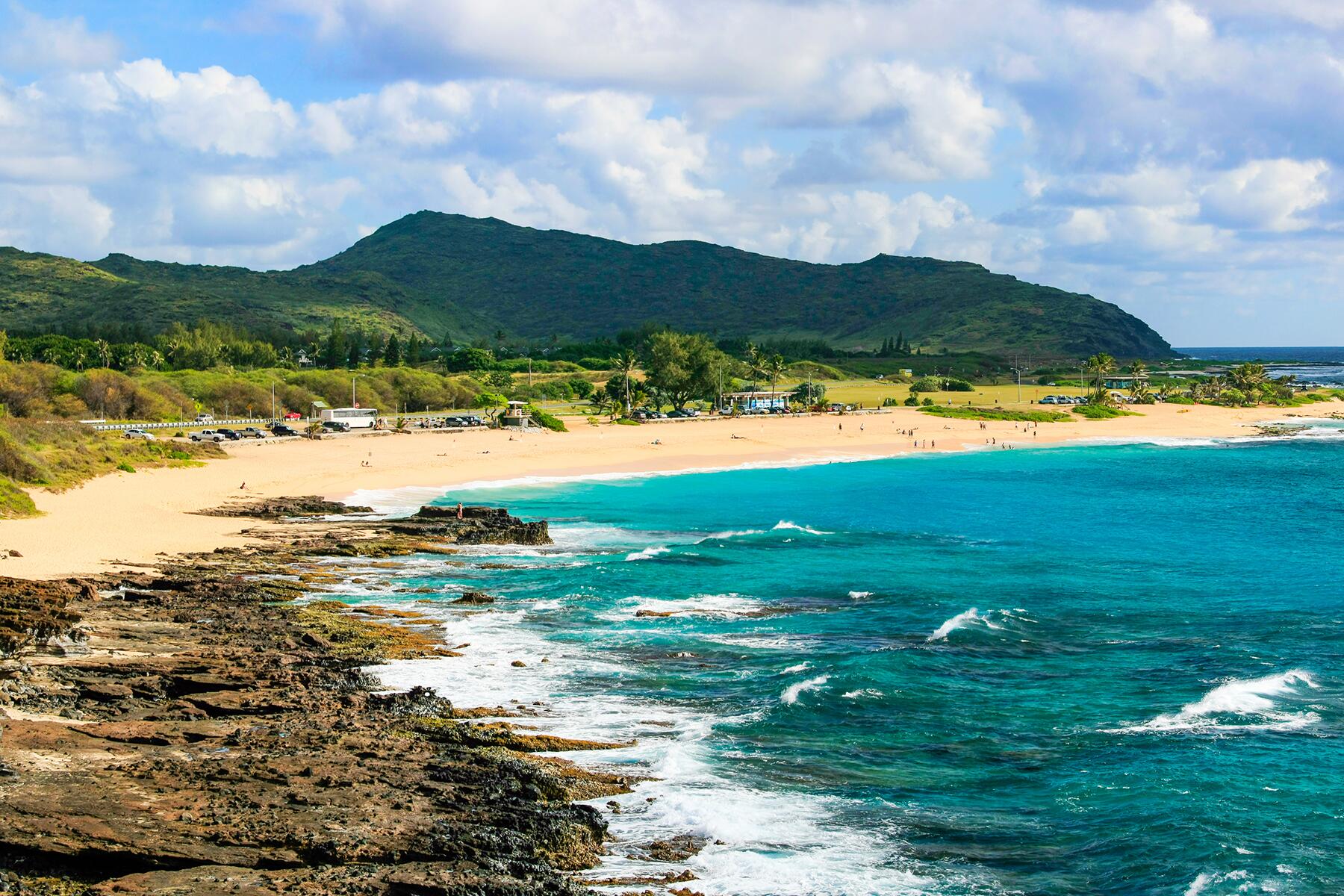La Belle France isn’t the world’s number one travel destination for nothing. But with such a plenitude of riches, how does one begin to choose? Here are five compelling reasons why travelers who want it all can head straight to the Dordogne, where an astonishing array of medieval towns and ancient castles, prehistoric caves, hanging gardens, spectacular views, and luxuriant countryside awaits you.
Cliff-top Towns and Chateaux
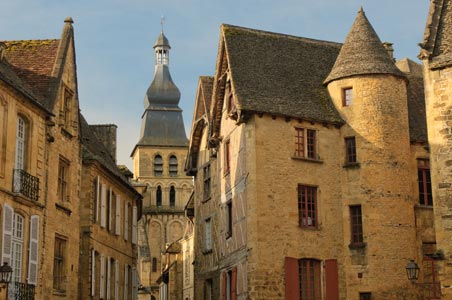
The Dordogne’s Périgord Noir tops the charts for its many attractions: cliff-top villages Domme and Beynac-et-Cazenac, with a 12th-century castle and to-die-for views; charming La Roque-Gageac built right into the cliff side; the hilltop Jardins de Marqueyssac with shaded paths, mazes, and formal parterre gardens; and enchanting Sarlat-la Canéda’s picture-perfect medieval buildings and winding streets. Sarlat’s proximity to many of the region’s top attractions makes it a good choice for home base and the area’s hundreds of rental cottages are an excellent option, many with pools.
Don’t Miss: Wednesdays and Saturdays are market days in Sarlat (8:30 am to 1 pm at Place de la Liberté). Look for a wide range of fresh produce, prepared dishes, and preserved local foods. If you can’t make it on a market day, the year-round covered market at the Sainte Marie church is open daily from 8:30 am to 1 pm (except Thursdays in the off-season).
Recommended Fodor’s Video
Food & Wine
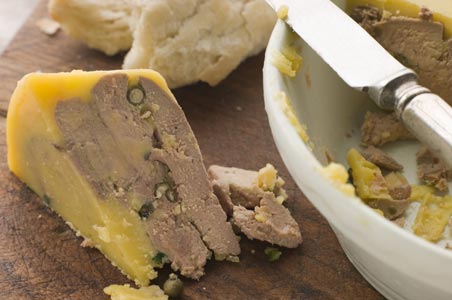
The Périgord—ancient name for the Dordogne—is the foie gras, duck, and truffle capital of France. Each season brings a rich local bounty: succulent white asparagus, morel mushrooms, and tender strawberries in spring; fresh fruit and produce in summer; walnuts, wild cepes, and girolle mushrooms in fall, and white and black truffles in winter. Not to mention the many local cheeses—like Cabécou, made from raw goat’s milk, and the soft walnut-liqueur-washed cheese crafted by the monks at Abbaye d’Echourgnac, where it is aged in the abbey vaults.
Of the 13 wines produced here, red or white Bergerac enhances most regional dishes. Aficionados love the elegant red Pécharmant and sweet Monbazillac is traditionally paired with foie gras. Locally made ambrosial walnut liqueur or fortified ratafia are served as apéros.
Insider Tip: Intrepid foodies hungry for a taste of Old France have beaten a path to the kid-friendly Auberge de Layotte to feast on seasonal delicacies, some scavenged from the chef’s own land: nettle soup, heaping platters of house-cured ham, wild boar terrine and rough-cut cornichons, confit de canard with forest cepes, beef cheeks stewed in the local red wine, and a hearty walnut gateau topped with elderberry, rose, or pine confiture, all for 30 Euros ($40), with wine, coffee, and digestif included. A scenic 10-minute drive from the Grotte du Grand-Roc, the Auberge is the perfect finale to a day of exploring. Reservations a must.
Prehistoric Capital of France
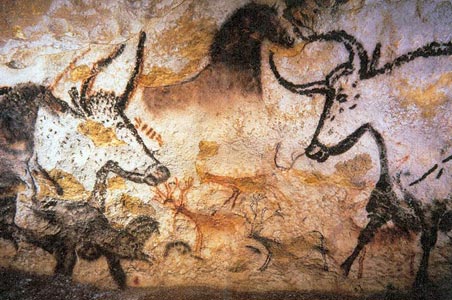
Although the renowned Lascaux—discovered by 18 year-old Marcel Ravidat, a local resident, in 1940—has been closed to the public since 1963, a perfect replica of the 17,000-year-old drawing-festooned cave’s main chambers, called Lascaux II, was opened just 200 yards away. Lascaux may be the best known of the prehistoric caves, but scores of caves and grottoes are scattered throughout Dordogne’s Vézere Valley, notably the Grotte du Grand-Roc, Grotte de Font-de-Gaume, and the Grotte des Combarelles, all near Les Eyzies-de-Tayac. To track a route through the area, Pole International de la Prehistoire’s detailed maps and information on the region’s vast trove of prehistoric sites are invaluable.
Insider Tip: In summer, tickets for Lascaux must be reserved by phone (055 351 9623) 3 to 4 days prior to your visit and are purchased in Montignac, next to the tourist office. Tours in English are available.
Don’t Miss: The Vézere Valley is also known for its many picturesque chateaux along the Vézere river, like the beautiful Chateau de Losse’s graceful gardens and 16th-century castle. Take a walk along the scenic grounds or stop into the charming garden cafe for house-made foie gras, fresh salads, and desserts in a lovely outdoor setting.
Outdoor Activities
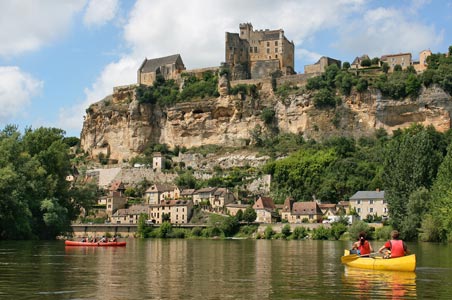
Having viewed the countryside from on high, the meandering Dordogne river provides an excellent vantage point from which to behold its many castles from below by canoe or kayak. The Vézere river snakes past ancient grottoes and archeological sites, with plenty of castles to admire along the way, as well as picturesque picnic spots. Canoe rentals are easily found around the main towns and outlying campgrounds. If you prefer dry land, spend a glorious afternoon riding along miles of bike paths past pristine rivers, walnut and fruit orchards, woods and wildflowers.
Insider Tip: Joel, the affable, English-speaking owner of Bike Bus will map out a route tailored to your needs and time frame. All bikes can be transported and picked up as needed. Trail bikes for trekking, electric bikes, kids models, and toddler carriages are available, too.
Unspoiled Natural Beauty
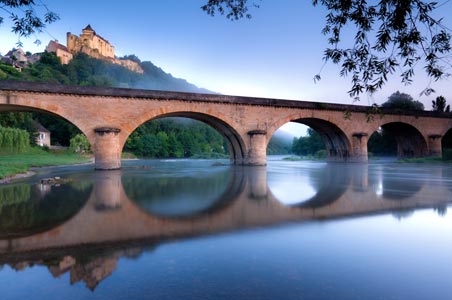
Perhaps the most compelling reason to visit the Dordogne is that wherever you go and whatever you do, you are surrounded by a magnificently preserved natural beauty. If you go by car, which we recommend, get a good map and explore some back roads. You will be richly rewarded with gorgeous scenery and tons of unexpected finds.
When to Go: Tourist season in the Dordogne is from May to October, but during the July and August high season the weather can be hot and the sights crowded. May, September, and October are excellent times to go.
All the major towns have tourist offices where you can pick up a wealth of information and brochures on all the major sites. The Sarlat-le-Canéda tourist office is the largest of the Périgord Noir region.
Photo Credits: Cliff-top Towns and Chateaux: javarman/Shutterstock; Food & Wine: Monkeybusinessimages/Dreamstime.com; Prehistoric Capital of France: William Cromar/Flickr (CC BY-NC-SA 2.0); Outdoor activities: jakobradlgruber/Shutterstock; Unspoiled Natural Beauty: Gareth Kirkland/Shutterstock
